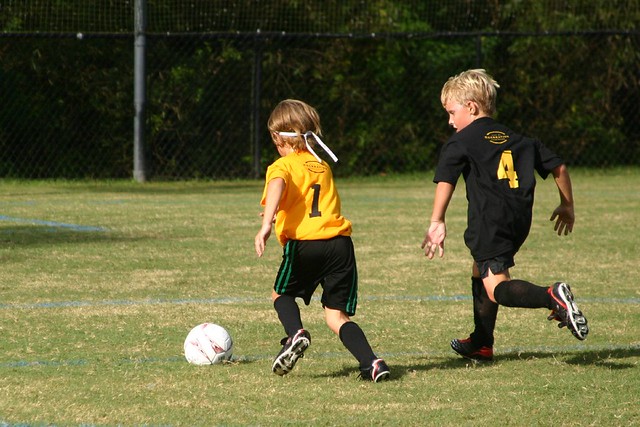We all share the common goal of raising healthy children, but are we going about it the right way and working together to create the desired result? There are words to use and those to avoid, messages to monitor and partnerships to create that will ensure our kids grow up in a healthy environment.

Words and Messages to Avoid
Good and Bad: There are many things we can describe as “good and bad,” but our food should NOT one of them. Applying these terms to foods only leads to us believe that we are “good” or “bad” for eating them. There are too many pressures on kids for us to make them feel this way about their food.
Calories: These energy units can take on a negative meaning when constantly counted, monitored, limited and discussed. If we aren’t cautious about how we talk about calories in front of children we can develop kids/teens that think calories are the only thing that matters on a food label or worse, that they want to limit their caloric intake as much as possible.
Carbs are bad and other inaccurate messages: Possibly we have foods that we believe aren’t the best for us even though they are generally healthful. We must be very cautious not to educate young people this way as they will grow to think that these theories and ideas about food are true. Most of us can enjoy an array of foods when we know how to do so safely. If for some reason we believe otherwise, we should keep these ideas to ourselves.
Words and Messages to Use and Encourage
Every day and Sometimes: Even though we shouldn’t label foods as “good” and “bad,” we absolutely should encourage some more foods more often than others. Tackle this by teaching kids that there are some foods we should eat “every day” because they give us energy to focus at school, give our all on the soccer field and still get our homework done at night (these are foods that earn Guiding Stars such as fruit, vegetables, lean protein, low/non-fat dairy, whole grains). Then, of course, there are foods we should have only “sometimes” because they are low energy and won’t sustain us for a long day. These include high sugar sweets, high fat/fried foods and the like.
Serving: Teach kids a proper serving and you have given them a life skill that they can take anywhere and apply as their independence grows so that they know how to create a healthful plate regardless of where they are. By focusing on servings you also encourage a balanced diet, which includes each food group.
Each food has a role: Protein to build muscle, calcium for strong bones, colorful produce to improve immunity…these are just some of the roles of food that we can teach our kids about. Help children understand the “why” we eat and they will be less likely to see the role of food as an emotional outlet and time filler.
Partnerships to Create
As parents, caregivers and health providers, we can develop relationships to encourage healthy kids…
With our schools: Support positive changes in the cafeteria and collaborate with health and PE teachers to ensure the correct message is taught. Parents and schools can work together to ensure our children are hearing the right words and coming away from these settings with an upbeat message about how to follow a balanced diet and live healthfully.
With our coaches: For our young children, the most important thing is to instill a love of being active…no matter what that looks like. While not every child will grow to be a varsity athlete, they should all be encouraged to engage in individual and team sports and other physical activities. This important for helping kids develop strong bodies, gives them a stress outlet and encourages movement instead of engaging in sedentary activities.
With our troop leaders, teachers and others: Extracurricular activities, school parties and outings for treats…these are the moments parents may not know about or feel in control of. We all need to work together to find ways to celebrate and enjoy the occasional “sometimes” food, but do it so that parents and caregivers are aware and can balance their child’s day/week around it.